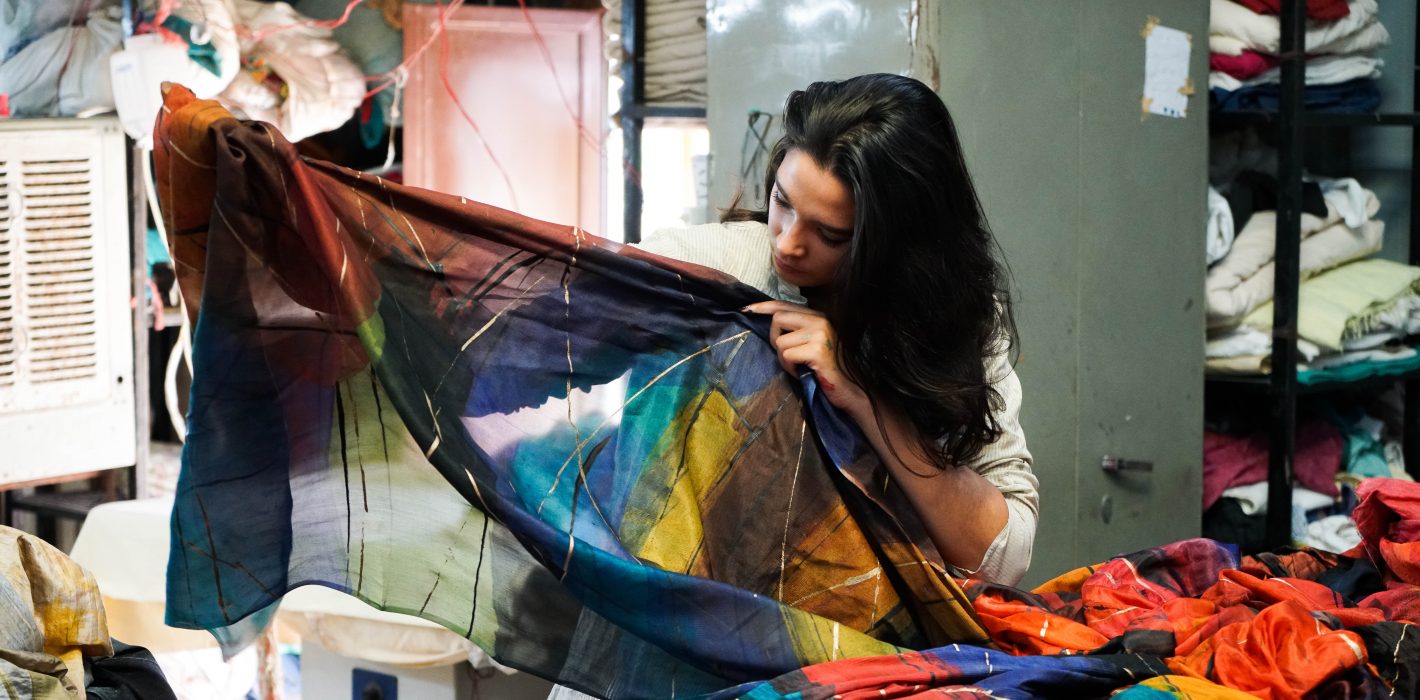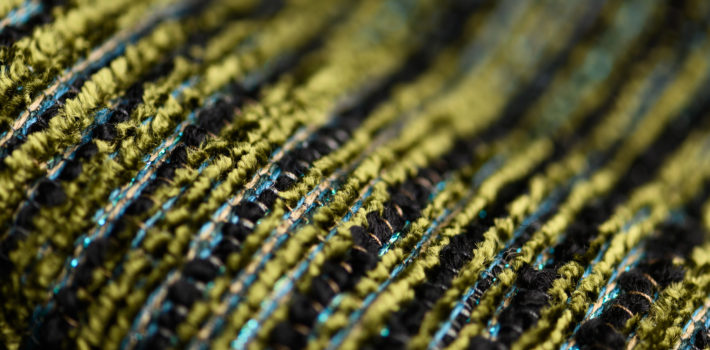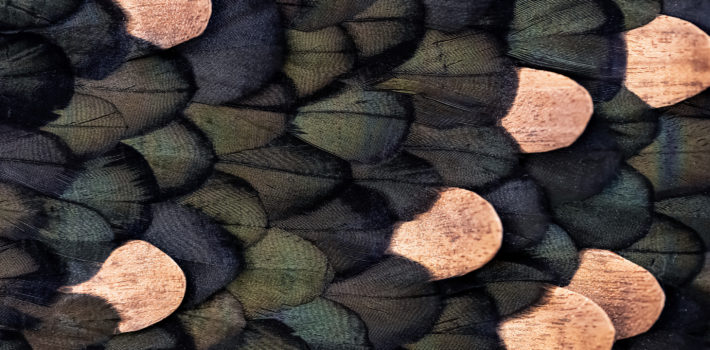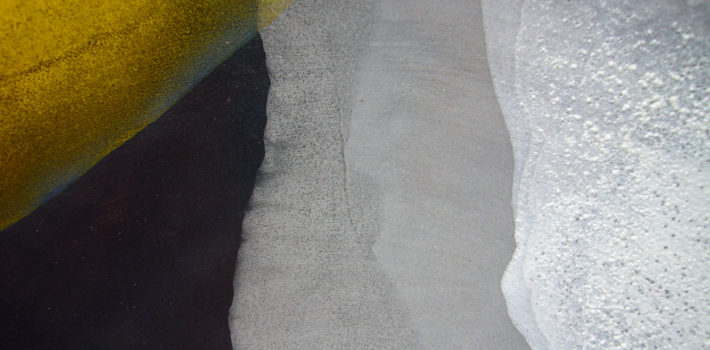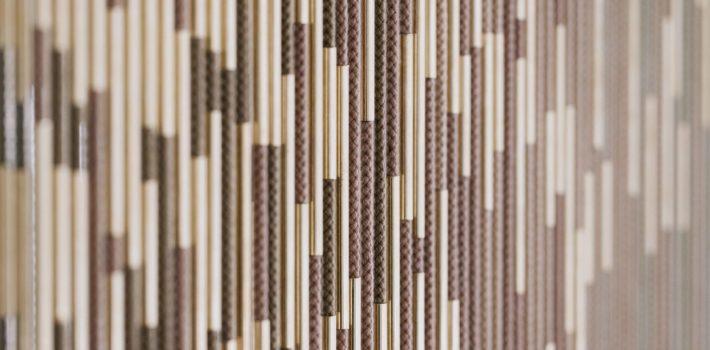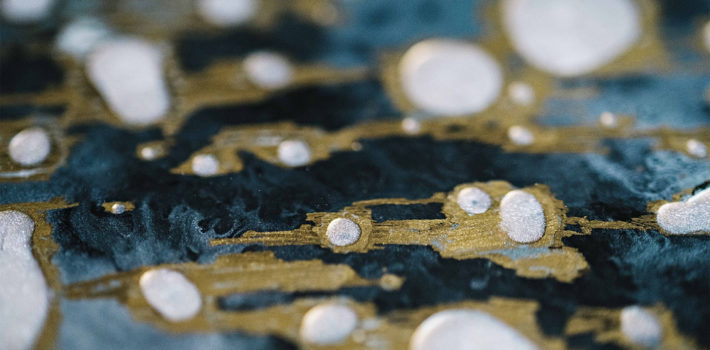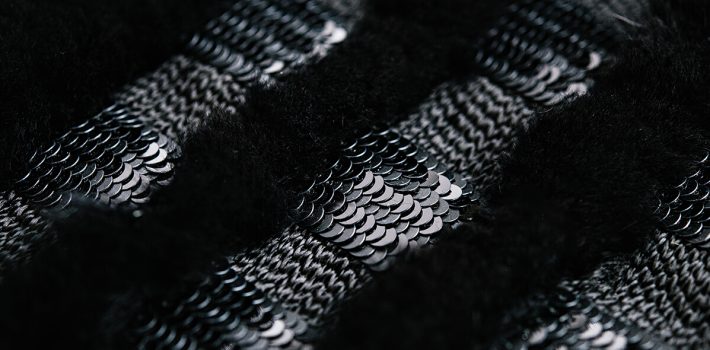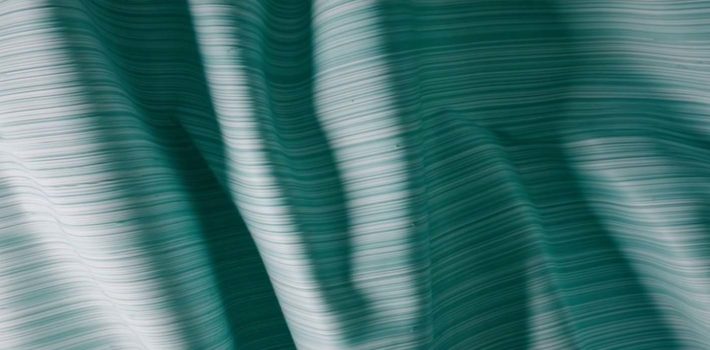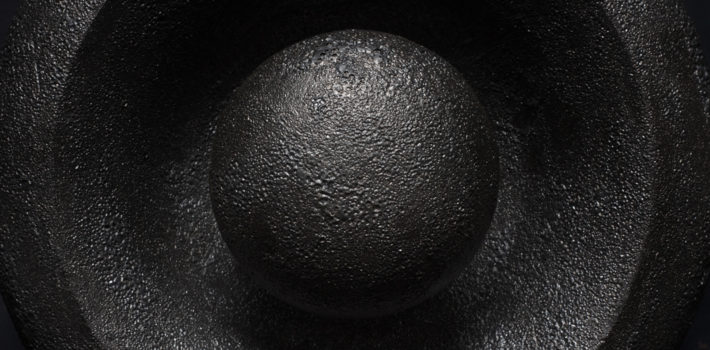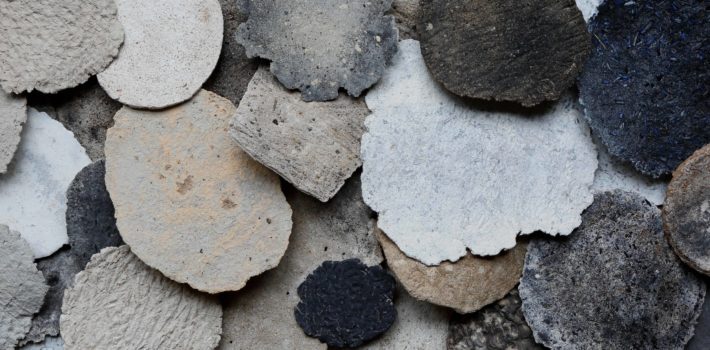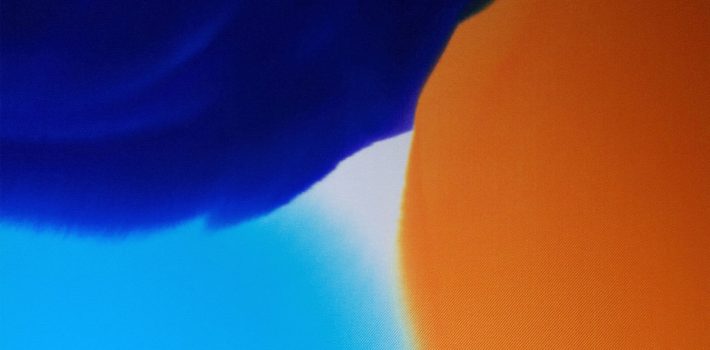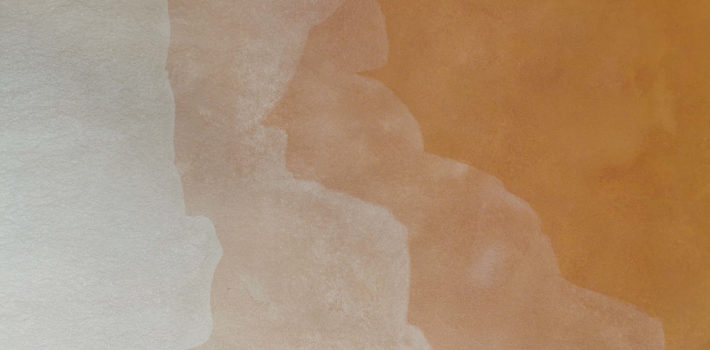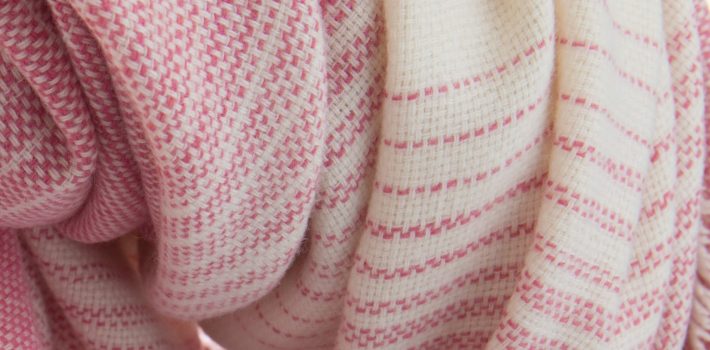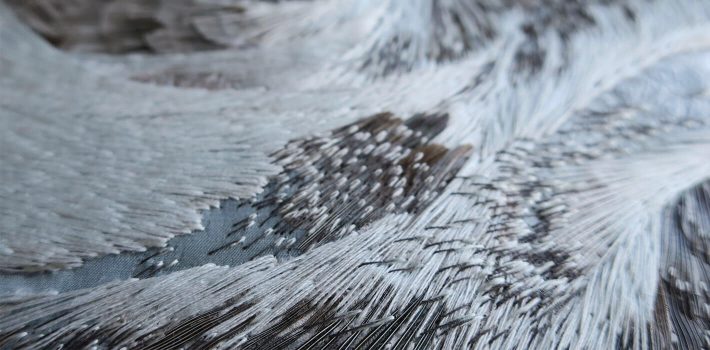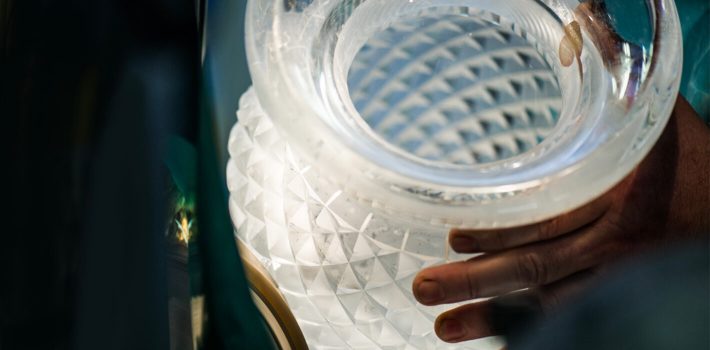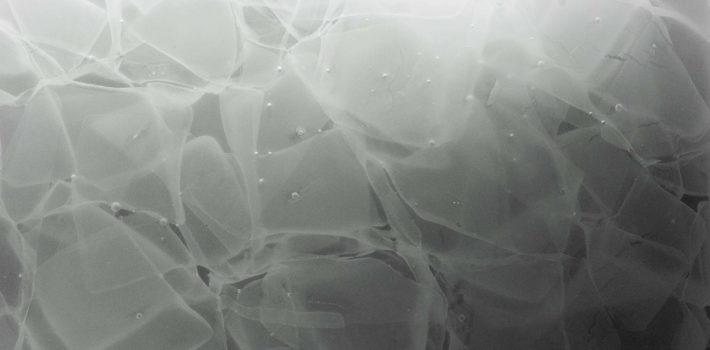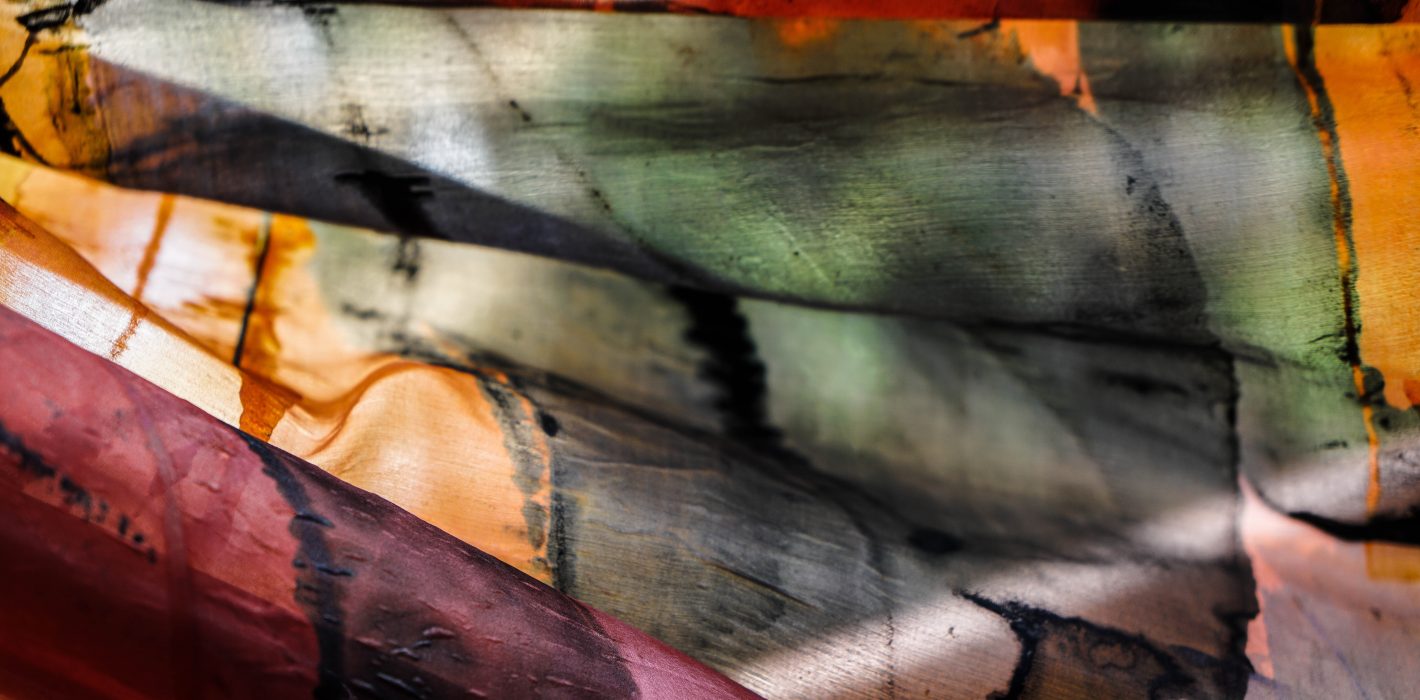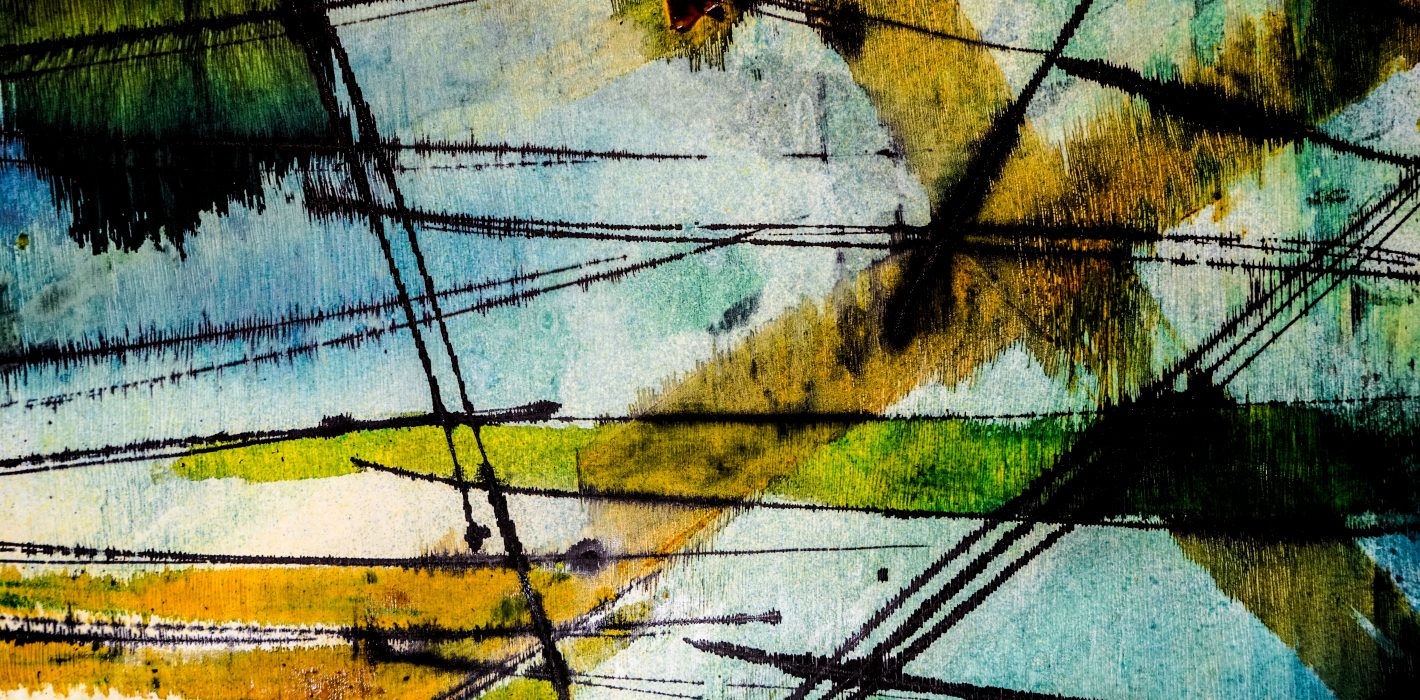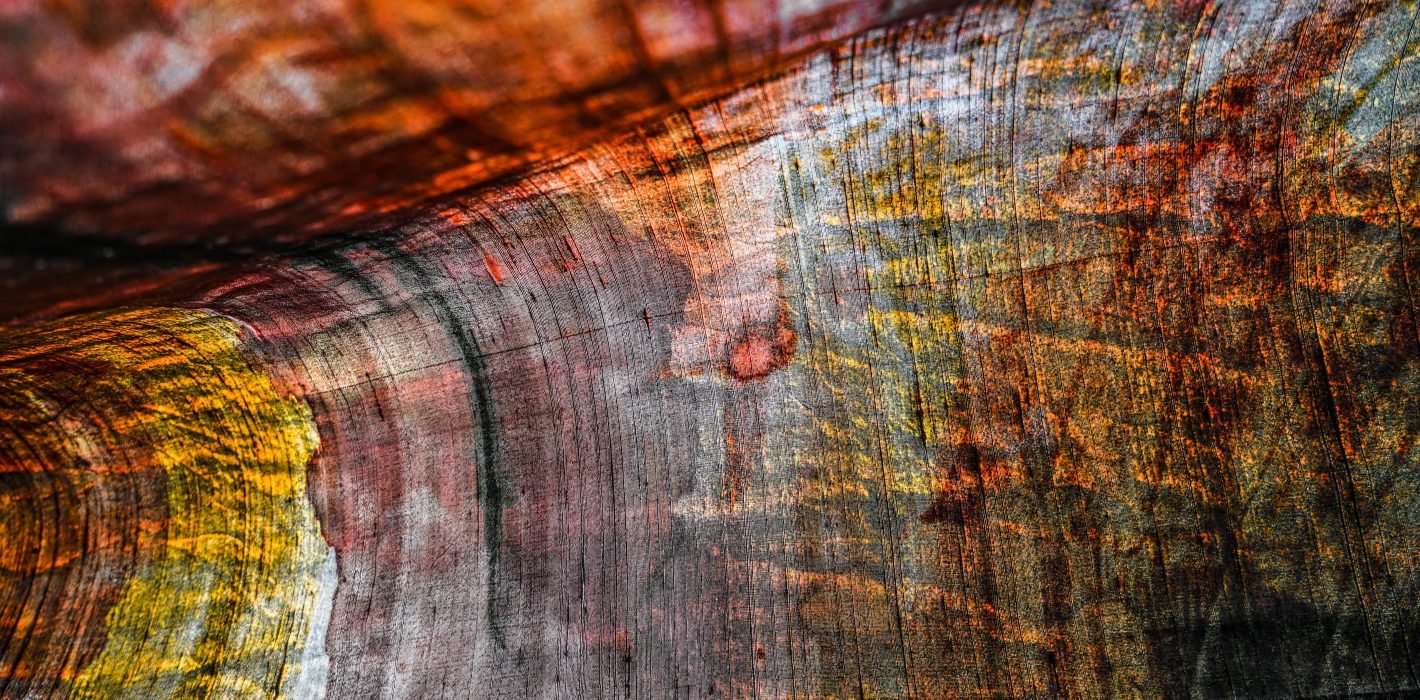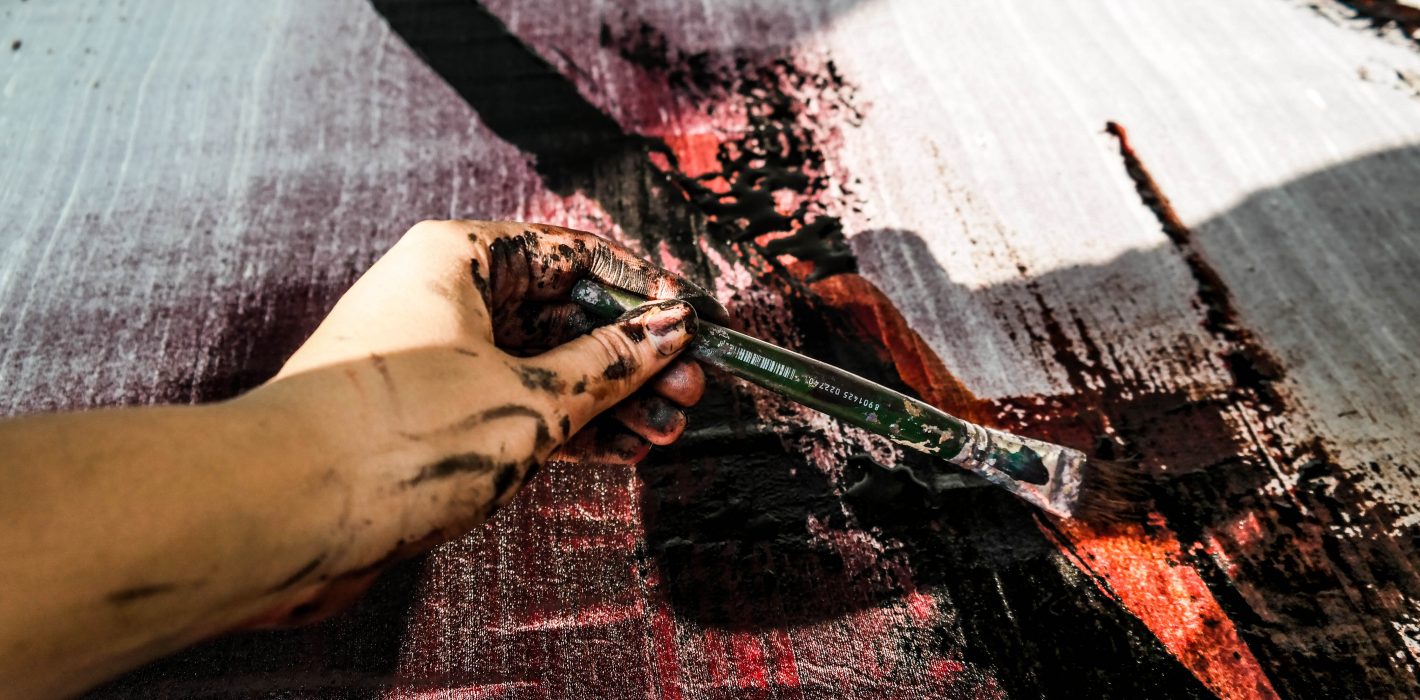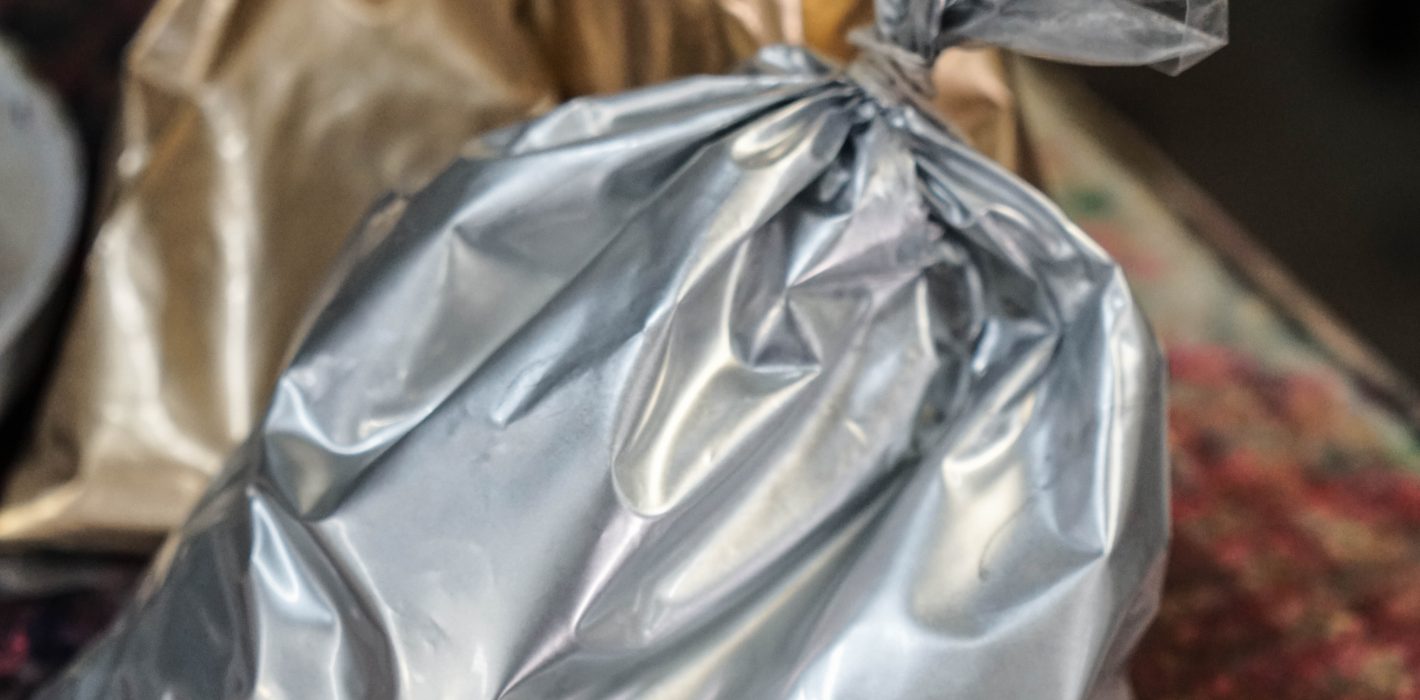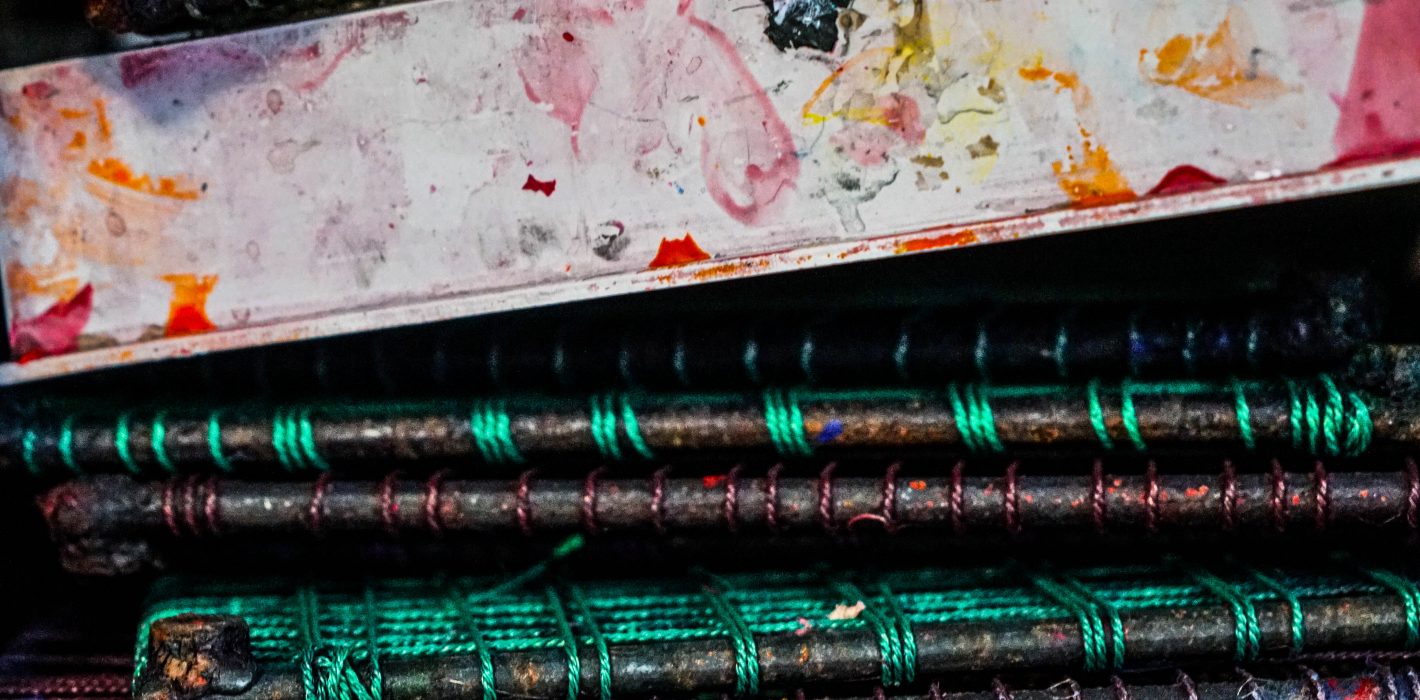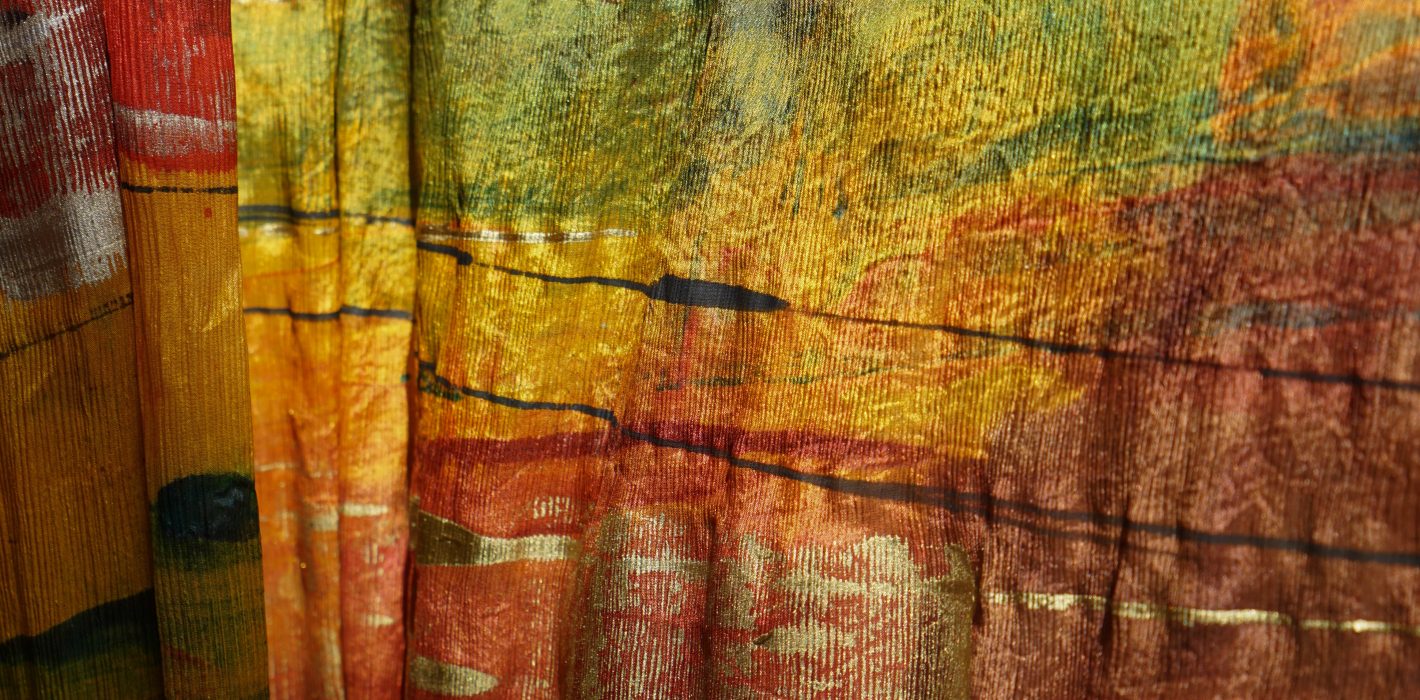Helena Bajaj Larsen
Textile Creator, A colorful personality!
Helena Bajaj Larsen is a textile creator. Silk, India, her family, and her wide range of artistic training are the major elements of the source of her technique and inspiration. She explains her choice of thesis topic and its importance in her artistic journey. She is a colorful personality who aims to explore new mediums or apply her art. Discovering her fabrics, inspirations, and close connection to India:
Can you tell us about your background ?
“I am 27 years old and of Indian origin from my mother and Norwegian from my father. I enrolled at Parsons Design School in New York for a Bachelor’s degree in fashion design with a specialization in Materiality (textile). During these 4 years, I spent a semester at Saint Martins in London in a specialized program on printed textiles. During this period, I did alternating internships at Marie Katrantzou, Vogue, Thakoon, Nina Ricci, as well as embroidery internships in India.
I quickly discovered a particular attraction to fabrics, especially silk. For my thesis at Parsons, I developed a collection of hand-painted silk fabrics. Each fabric is therefore unique. After my studies, I applied to many competitions through which I was able to gain access to incubators, etc. I worked for two months for Donna Karan’s Urban Zen brand in Port-au-Prince to develop collections with Haitian artisans for her US boutiques.
That’s where I was exposed to different materials and products beyond fabric and fashion: home objects, leather accessories, ceramics, wood, horn… which confirmed my desire to be a textile artist for diverse projects rather than just fashion.”
How did you start your own business?
The first incubator I joined was in India. I developed a new collection there in February 2018, which officially launched my brand. I was fortunate to receive a lot of coverage from the Indian press, and my career really took off there, starting with the Indian market.
I also subsequently developed a clientele in Europe, the Middle East, the United States, and completed projects all over the world. It was through young designer competitions that I gained access to international platforms to make myself known. With the health crisis, everything slowed down slightly because I used to travel a lot for my production. So, I took advantage of this period to pursue a master’s degree in Business Management for Design Industries in Milan. The idea was to acquire solid business knowledge that could serve me for my own company.
Do all of your productions are made in India?
I work with a workshop in Jaipur, a city known for its rich craftsmanship in textile and jewelry making. I source all of my silks from small weaving studios located in Indian villages that are part of a program created by the state of Maharashtra to support small rural economies.
In my workshop in Jaipur, I work on large tables where I pin up these white silks. I select my colors and prepare my dyes: a thick gel that dries on the fabrics which allows me to create layers and real depth of colors. The fabrics dry and stiffen in the sun before being rinsed and steamed. Then, I add gold and black details, as well as silk embroidery… creating even more depth.
When the fabrics are ready, I work with another factory to produce the garments based on patterns. I do a lot of custom orders.
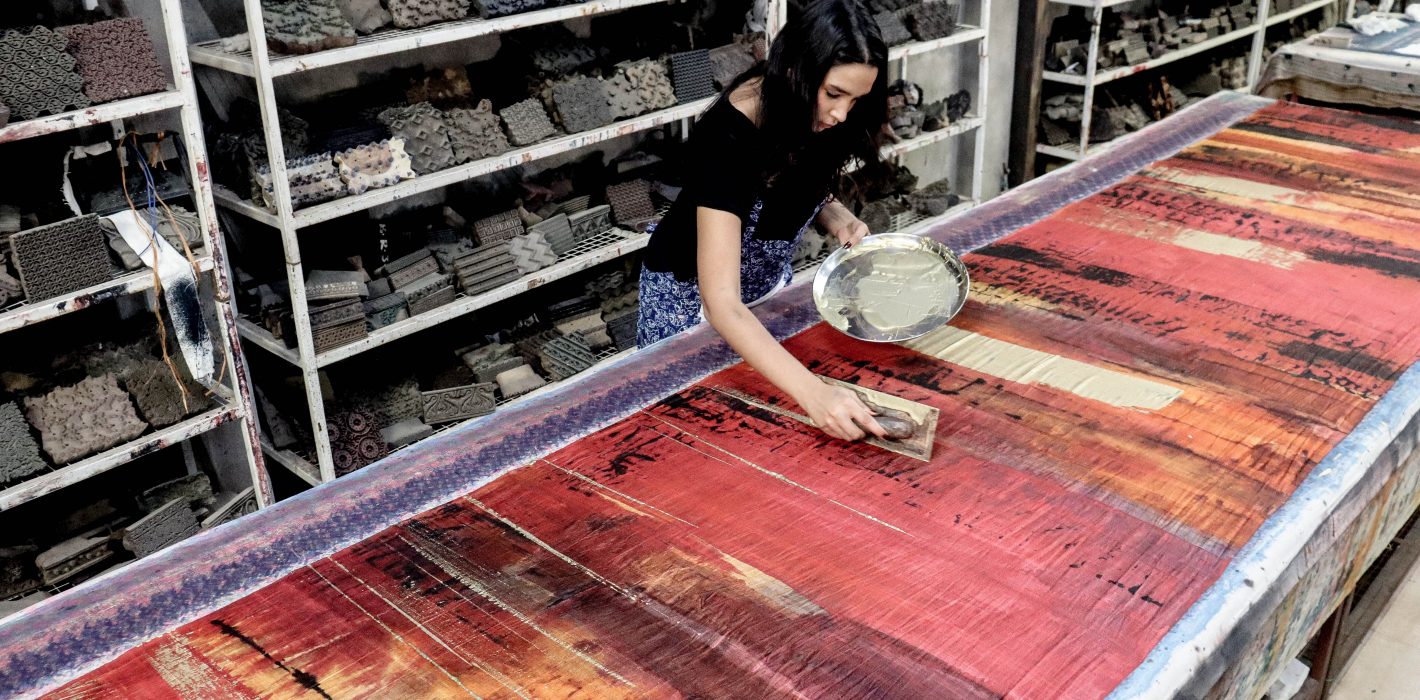
What was the topic of your thesis?
As I was looking for a topic, one day I had a discussion with my mother about Khadi. Khadi is a fabric that was the symbol of the independence movement in India. You have probably seen pictures of Mahatma Gandhi spinning cotton on a wooden wheel. It was a form of boycott to produce a fabric that would not come from England. Everywhere in India, people began to spin: men, women, all religions and social classes.
The people who adhered to this movement wore this white fabric. My Indian grandparents were very involved in the independence movement and both worked for Gandhi. My mother always saw her parents spinning every morning from 4 a.m. It was a powerful symbol.
So this topic was obvious to me, as it linked textiles, my family, and India. I took this white fabric and brought specific colors to it: during a trip to India, I took pictures of textures in spaces, close-up shots of walls, floors, materials. My inspirations often come from photography. I took pictures of the villages where my parents worked, the Khadi factories…
I then collected these images and assembled them like a large kaleidoscope to extract the colors: red earth, yellowed walls, brown vegetation… Colors that I then applied to my Khadi.
On the final product, nothing was left to chance. I associated texts, little stories related to my family, my childhood, as well as a photo book and my essay. In addition to all this, I created a collection of silver jewelry: silver plates on which I recreated the textures of my photos.
What would you like to develop in your practice?
I wish to develop interior design projects more and more. I have already created a piece of furniture using wild silk in partnership with the architectural studio Pendhapa Atelier, and recently I have become interested in the world of carpets as well. I would also like to work with ceramics, glass, and make them my own by incorporating my identity into them. However, fabric is my primary medium. It allows me to link art and function and offers an intimate interaction between humans and objects.
